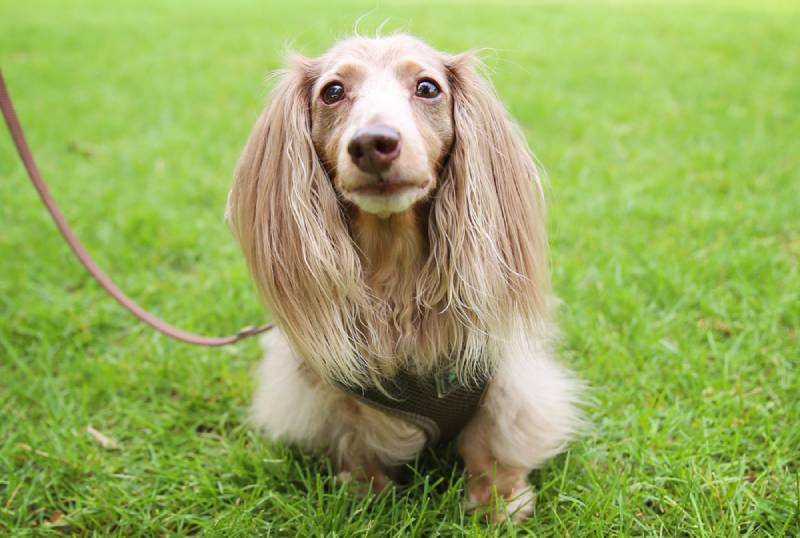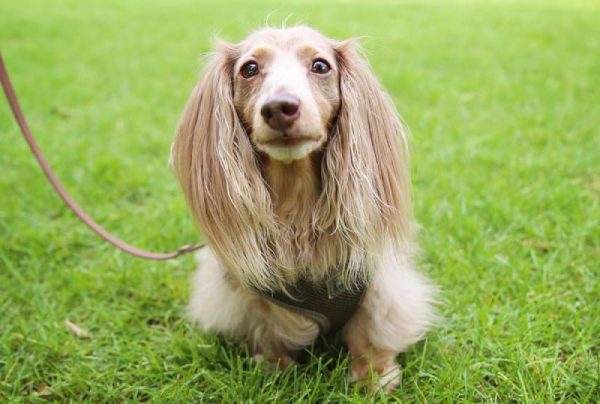Click to Skip Ahead
If you’ve ever crossed paths with a Dachshund, you’ve no doubt been bowled over by their cuteness, enthusiasm, and sausage-like features—but don’t be fooled. Though Dachshunds are very sweet, they’re far from shy and were bred for some very dangerous tasks.
In this post, we’ll introduce you to the fawn (also known as “Isabella”) Dachshund and take you back to these dogs’ roots.
Breed Overview
Height:
5–6 inches (miniature), 8–9 inches (standard)
Weight:
Up to 11 pounds (miniature) 16–32 pounds (standard
Lifespan:
12–16 years
Colors:
Black tan, chocolate & tan, cream, wheaten, wild boar, red, blue & tan, fawn (Isabella), fawn & tan, black & cream, fawn & cream, chocolate & cream, blue & cream, chocolate, black,
Suitable for:
Active families looking for a spunky, loving, and small dog
Temperament:
Courageous, clever, vivacious, hardworking, sociable
Dachshunds are very diverse, with 12 coat colors and color combinations making up the American Kennel Club’s breed (AKC) standard, and, in addition, three alternate colors.
Fawn, also known as “Isabella,” is a light tan shade with a yellowish tinge and is one of the alternate colors for the AKC, but fawn & tan and fawn & cream combinations are AKC standard color combinations. AKC-standard Dachshund markings are brindle, dapple, piebald, and sable. Brindle piebald is an alternate marking.
Fawn Dachshund Breed Characteristics

The Earliest Records of Fawn Dachshunds in History
In the 17th century, the adorable “sausage dog” as we know it today started to be developed by German breeders from ground-hunting dogs. Dachshunds may have descended from the German Schweisshund and/or German Pinscher, which could have been crossed with Terriers and/or Spaniels to achieve a wide variety of coat colors and coat types (smooth, wirehaired, and longhaired).
The breed was developed to be a fierce and capable badger hunter, small enough to fit into burrows, but feisty enough to face a large and dangerous foe ready with claws and teeth of its own.
For this reason, the Dachshund’s ribcage is long and curved to be roomy enough for the heart and lungs and, of course, to protect these vital organs. The short legs helped the dog to get into burrows, and the prominent chest and shoulders helped them to navigate through them.
How Fawn Dachshunds Gained Popularity
Dachshunds were first introduced to America in the late 19th century and had become popular companion dogs prior to the First World War both in Germany and abroad, likely thanks to their cute features, small size, and big personalities.
Unfortunately, WWI saw a decline in their popularity in the U.S., as these dogs were viewed as symbols of Germany. As a result, the AKC started referring to Dachshunds as “liberty pups” or “badger dogs” to help salvage their popularity and protect them from violence.
Nevertheless, the breed survived this dip in popularity and continued to be faithful companions in many homes, including those of famous people like Marlon Brando, Elizabeth Taylor, and Andy Warhol. Some Dachshunds even served in the Second World War as bomb-sniffing and tracking dogs.
Formal Recognition of Fawn Dachshunds
Dachshunds were first recognized by the American Kennel Club, in which they are members of the hound group, in 1885, though fawn on its own is considered an “alternate” color rather than a “standard color” by the club. Only the combinations of fawn and cream and fawn and tan are standard.
However, The Kennel Club in the U.K. lists fawn as a breed-standard color for Dachshunds, as well as the coloring patterns fawn brindle and fawn dapple. The United Kennel Club first recognized Dachshunds in 1919. Though “fawn” is not mentioned specifically in its breed standard, for one-colored Dachshunds, the UKC’s breed standard mentions tan, red-yellow, and yellow.
Top 3 Unique Facts About Fawn Dachshunds
1. Miniature Dachshunds Were Bred for Rabbit Hunting
The 19th century saw an increase in the rabbit population in Germany. This led to the development of the Miniature Dachshund since a tiny, yet bold dog was needed to help take care of this.
2. The FCI Recognizes a Third Type of Dachshund
Though the AKC only recognizes Standard and Miniature Dachshunds, the Federation Cynologique Internationale in Europe recognizes a third type known as the “Rabbit Dachshund”. This Dachshund is smaller than the Miniature, though not by much.
3. Dachshunds Inspired the Word “Hotdog”
Before it was called a “hotdog”, the sausage-bun-sauce combo was called “Dachshund sausage” as a nod to the breed’s unique body shape, which means that the Dachshund actually served as inspiration for the word “hotdog”!

Does a Fawn Dachshund Make a Good Pet?
Dachshunds are popular with some for their small size, but what they lack in height, they certainly make up for in personality! Every dog is an individual and has their own personality, but in general, well-socialized Dachshunds are lively, bold, and friendly, and fit beautifully (quite literally) into any loving and respectful home.
One thing to be aware of if you have small children is that interactions should always be supervised to ensure the Dachshund doesn’t get hurt, especially since their backs are fragile. For this reason, it is best to not let your Dachshund jump onto or off of too-high furniture in case they miss or fall and end up injuring themselves.
This doesn’t mean you should be overly protective of your Dachshund, though—these dogs are very active, energetic, and love to play, it is just about being careful and knowing their boundaries.
Conclusion
In the dog world, the Dachshund breed is what we’d call the ultimate survivor. They’ve faced badgers head-on, anti-German sentiment during the First World War, and have even served in the military. Today, the Dachshund is the ninth most popular breed in the U.S. as per the AKC’s popularity rankings, and one thing’s for sure—they’ve fought very hard to get there!
Featured Image Credit: Annette Shaff, Shutterstock










